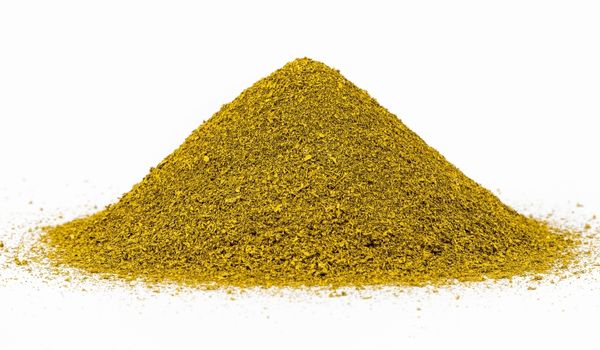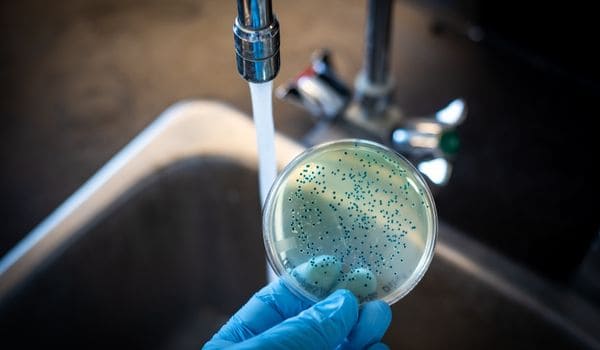KDF filter media doesn’t get the same spotlight as carbon or reverse osmosis — but it should. Built on electrochemistry, this copper-zinc blend quietly removes heavy metals, chlorine, and even sulfur smells from your water supply. And it plays well with others — you’ll often find it boosting performance in multi-stage systems.
Is it right for your water setup? Let’s find out.
⚡ Quick Takeaways
- 🧪 What it is: KDF is a copper-zinc filtration media that uses redox (oxidation-reduction) to remove chlorine, heavy metals, and more.
- 🔧 How it works: Contaminants are chemically altered or neutralized when they come into contact with KDF’s charged granules.
- 🚿 Where it’s used: Common in whole-house, shower, and under-sink filters — often paired with carbon for broader coverage.
- ♻️ Why it’s popular: It’s long-lasting, recyclable, bacteria-resistant, and works in hot water where carbon can’t.
- ⚠️ Limitations: Doesn’t remove VOCs, pesticides, or fluoride — and it requires good water pressure for self-cleaning systems.
🧪 What Exactly Is KDF?

KDF isn’t just a fancy acronym — it stands for Kinetic Degradation Fluxion, and it’s one of the unsung heroes of modern water filtration.
At its core, KDF is made from high-purity copper and zinc granules. When water passes through it, these metals create a chemical reaction called redox (short for reduction-oxidation). That process helps break down or block things like chlorine, iron, and heavy metals — all without adding chemicals or changing your water’s flavor.
🔍 Quick science bit: Redox reactions basically swap electrons between contaminants and the copper-zinc blend. That change neutralizes or transforms the bad stuff into something far less harmful.
💡 Fun fact: KDF isn’t new — it was first developed in the 1980s and is still used today in everything from shower filters to whole-house systems.
🏠 Where Is KDF Actually Used?
You’ll find KDF in more places than you might expect — it’s not just for fancy home filters. Because of its ability to zap chlorine, neutralize metals, and stop bacteria in its tracks — it’s a go-to choice across industries.
Here’s where it shows up:
- 🏢 Water treatment facilities – Municipal plants use it to remove chlorine and heavy metals before the water hits your tap.
- 🍽️ Restaurants and hotels – Commercial kitchens and beverage systems rely on it for cleaner, better-tasting water.
- 🧪 Medical and lab settings – Facilities use KDF to strip out lead, mercury, and other metals from feedwater.
- 🏡 Home filtration systems – Homeowners use KDF in whole-house, undersink, shower, and well water systems to tackle sulfur smells, iron, and more.
📌 Why it’s so versatile: KDF doesn’t just filter — it also slows bacteria growth inside filters, making it ideal for extending the life of carbon media and keeping water fresh longer.
For a closer look at other options, check out this guide to removing iron from water, especially if you’re comparing media types.
✅ Why People Like KDF (And Why Filters Use It)

KDF isn’t just filler — it plays a big role in making other filter media more effective. Here’s why it’s such a strong add-on:
- 🧪 Safe & Proven KDF meets EPA and FDA standards and doesn’t leach anything harmful into your water. No chemicals, no toxins — just copper and zinc doing their thing.
- 🛡️ Fights Bacteria & Biofilm It doesn’t just trap contaminants — it actually damages and neutralizes bacteria, algae, and fungi. That’s a big win if you’re using carbon filters, which can grow funk over time.
- 🔥 Handles Heat Like a Pro Unlike carbon filters or RO membranes that can’t deal with hot water, KDF holds up just fine. That makes it ideal for use in shower filters and whole-house systems where warm water matters.
- ♻️ Eco-Friendly Most KDF media is recyclable. And since it doesn’t absorb contaminants, it doesn’t turn into hazardous waste like used-up carbon does.
- 💸 Saves Money in the Long Run KDF doesn’t break down quickly, and in self-cleaning systems, a simple backwash keeps it going strong. Bonus: It extends the life of any carbon filters it’s paired with — fewer replacements, less hassle.
⚠️ A Few Drawbacks Worth Noting
KDF filters are smart — but they’re not perfect. Here’s what to consider:
- 💦 They Use More Water During Backwashing Self-cleaning KDF systems need a solid backwash to stay fresh — sometimes using up to 200 gallons a week. If you’re on city water, that could nudge your utility bill higher.
- 🚿 Requires Decent Water Pressure If you’re on a low-flow well or have low household pressure, the system might struggle. A booster pump may be needed in some setups.
- 🌎 Not Ideal for Drought-Prone Areas The extra water use from backwashing can be a concern in regions where conservation is key. That said, the long media life and lack of disposable filters do help balance things out.
📌 Just a heads-up: These drawbacks have less to do with performance and more to do with whether the system fits your home setup.
If your plumbing and pressure can handle it, KDF is still one of the best low-maintenance upgrades out there.
💠 Types of KDF Media

Not all KDF media is the same — each type targets specific contaminants and fits different filtration setups. Here’s a quick breakdown:
| 🔬 Type | 💡 What It Targets |
|---|---|
| KDF 55 | Chlorine, lead, mercury, and other heavy metals. Often used to boost carbon filter performance. |
| KDF 85 | Iron and hydrogen sulfide. Popular for well water and paired with water softeners. |
| KDF-F Fine Mesh | Works well with carbon filters. Improves contaminant removal without slowing flow. |
| KDF-C Coarse Mesh | Removes chlorine and metals like lead while preserving water pressure. Great in compact systems. |
📌 Good to know: Some high-end carbon filters also include KDF to extend lifespan and enhance chlorine removal. You’ll see this a lot in combination systems..
❌ What KDF Filters Don’t Remove

KDF media is powerful, but it’s not a cure-all. On its own, it leaves certain contaminants behind — which is why it’s often paired with other filter types.
Here’s what KDF typically does not remove:
- 🧪 Organic Chemicals – Things like pesticides, herbicides, and disinfection byproducts (e.g., trihalomethanes) usually require activated carbon. More on carbon filters here.
- 🦠 Parasitic Cysts – Some microscopic organisms are chlorine-resistant and need mechanical filtration, like a ceramic or ultrafiltration membrane.
- 🧫 Chloramine – While KDF removes a lot of chlorine, it’s not very effective against chloramine (a chlorine-ammonia combo increasingly used by water utilities).
- 🧂 Fluoride – KDF doesn’t touch fluoride. For that, you’d want activated alumina or reverse osmosis.
📌 Pro Tip: If your utility uses chloramine or you’re concerned about pesticides, consider pairing a KDF system with a carbon block or RO filter for full-spectrum protection.
🧠 Where KDF Really Shines

Most KDF filters are part of a larger system — and that’s where they really flex.
KDF doesn’t try to do everything. Instead, it works alongside other media (like carbon) to boost overall performance. Ever wonder why one carbon filter removes more chlorine than another? Chances are, it’s KDF-enhanced.
📌 Big picture: KDF plays a supporting role in combo systems. It adds staying power, expands what the filter can tackle, and helps keep materials like carbon from gunking up too fast.
🧩 On its own, KDF won’t remove:
- Chloramine
- Fluoride
- VOCs
- Parasites
But combine it with a high-quality carbon block or reverse osmosis setup? Now you’re cooking.
🧩 Where You’ll Find KDF in Action
KDF media isn’t a standalone hero — it’s the sidekick that supercharges other filtration systems. Whether you’re filtering city water or battling well water nasties, here’s where KDF tends to shine:
✅ Scroll the table for common setups and how KDF pulls its weight.
| 🔧 Filter Type | 💡 How KDF Helps |
|---|---|
| 🏠 Whole-House Filters | Boosts performance of carbon media and handles tough well water issues like hydrogen sulfide. Long lifespan and high flow make it ideal for home-wide use. |
| 🚰 Undersink Systems | Protects carbon and reverse osmosis membranes from chlorine and heavy metals — perfect for kitchens or drinking water taps. |
| 🧴 Faucet & Countertop Filters | KDF coarse mesh media helps improve chlorine removal without clogging or slowing water pressure in compact units. |
| 🚿 Shower Filters | Withstands hot water while removing chlorine and heavy metals — a favorite for healthier skin, hair, and color-treated hair. |
| 💧 Water Softeners | Sometimes paired with softeners to filter iron, sulfur, or bacteria — helps protect the softener resin and plumbing system. |
| ⛏️ Iron Filters | Oxidizes iron and neutralizes sulfur odors without the need for harsh chemicals — works well in many well systems. |
💬 Good to know: Not all filters list KDF front and center, especially when it’s paired with carbon. If a filter promises heavy metal or sulfur removal but doesn’t use chemicals — chances are, KDF’s doing the heavy lifting behind the scenes.
💭 Final Thoughts
KDF isn’t exactly a household term — but it’s a powerhouse when it comes to making your water safer and cleaner.
Whether you’re trying to cut down on chlorine, stop that rotten egg smell, or give your filters a helping hand, this copper-zinc media gets the job done where others fall short. It won’t solve every issue, but what it does, it does with surprising efficiency.
✅ Long-lasting
✅ Safe for hot and cold water
✅ Eco-friendly and recyclable
✅ Plays well with other filter types
It’s not a catch-all solution — you’ll still need a setup that matches your home’s water profile. But if you’re putting together a system that truly works, KDF brings extra value without much fuss.
📌 Bottom line: Want to simplify your filtration setup and still protect your plumbing? KDF is a smart add-on — just be sure to test your water and pair it with a system that matches your needs.
Not sure what your water really needs? Start with a test so you’re choosing a filter that fits the actual problems in your home.
 135 people found this helpful. Was this guide helpful to you?
135 people found this helpful. Was this guide helpful to you? 

